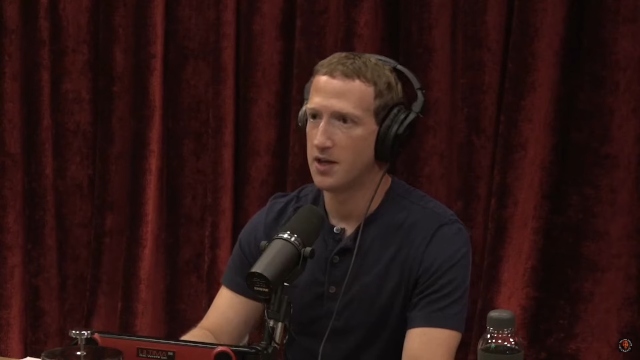New documentary on Jan. 6 alleges egregious crimes by police, including murder, entrapment
08/31/2022 / By News Editors

A new documentary on the January 6 disturbance at the U.S. Capitol reveals multiple “flagrant” crimes committed by police, including murder, assault “with intent to do great bodily harm,” and premeditated entrapment on a massive scale.
(Article by Patrick Delaney republished from LifeSiteNews.com)
“The Real Story of January 6” was produced by The Epoch Times and counters the Democrat and corporate media narrative that characterizes the protest as a “violent insurrection” and an attack on the American system, comparable with 911 and the bombing of Pearl Harbor.
Yet utilizing expert analysis, eyewitness accounts and exclusive video footage, the film unveils multiple facts indicating a deliberate plan by federal authorities to violently provoke the massive crowd into behaviors that would provide officers a pretense for the use of disproportionate (and even criminal) force with an ability to make widespread arrests of the pro-Trump protestors.
Investigative reporter Joshua Philipp interviewed veteran journalist Joseph M. Hanneman, who has focused on this issue for several months.
“There was plenty of police provocation,” explained Hanneman, including the indiscriminate firing of munitions into the unassuming crowd that not only provoked dismay and anger (video, warning: profanity), but likely lead to two cardiac events and deaths of two individuals in the crowd.
“The initial use of explosive munitions that day started at about 1:25 in the afternoon,” Hanneman continued. “The police launched explosives into the crowd which was pretty much just viewing there and standing [on the lawn].”
Some of the explosives contained “hard plastic pellets that rained down, and some had tear gas in them” that caused injuries evoking dismay and tremendous anger among the peaceful protestors who “largely support law and order” as expressed in the slogan “back the blue.” In addition, this large rally crowd consisted of individuals from all walks of life, including many older people, women and children who were also being fired upon.
‘That was a shooting gallery up there … egregious’
To provide a professional assessment of police behaviors on that day, The Epoch Times interviewed Stan Kephart, a former police chief and security director of the 1984 Summer Olympics in Los Angeles. Philipp described Kephart as “one of the nation’s top experts on police use of force and one of the top-rated expert witnesses in court cases on crowd control.” With 42 years of law enforcement experience, serving in various leadership roles in California, Arizona and Missouri, Kephart “has testified more than 350 times in federal, state and tribal court.”
Kephart classified this conduct by the police as “egregious,” and a “supervisory failure.” The individual in charge “should have put those people in posted positions or in a skirmish line or in a defense posture between the objective that they were protecting and the crowd. That wasn’t being done.”
Instead, “that was a shooting gallery up there, a congregation of officers … who were using these munitions to inflict harm and injury on people below them. It’s egregious.”
Officer pushes man off wall to at least a 20-foot drop: ‘unconscionable,’ ‘a very serious crime’
The documentary provides another example of a protester climbing a wall in an attempt to mount a Trump flag in some highly visible location. After evading swipes by a couple of officers as he stood on the ledge outside a marble guard rail, Hanneman explains how “a motorcycle police officer from Capitol Police came up with a pretty good stride and shoved him and he fell at least 20 feet and was seriously injured.
“That was witnessed by a lot of people. And then when they carried him out, a lot of the crowd saw the aftereffects of that and they were very upset,” he explained.
“My analysis of a police officer pushing somebody off the wall is that that individual is committing a crime, a very serious crime, again, putting that person’s life at risk,” Kephart said. “It is unconscionable for an officer to do such a thing. The officer is required to take that person off the wall, strip cuff them, take them into custody and arrest them.”
Officer commits ‘sadistic’ ‘crimes,’ ‘showing intent’ to harm: Two Trump supporters die of ‘cardiac events’
Another clip shows the body camera of an officer who Hanneman describes as being “almost in a manic state … looking for more munitions.” He had used all of his up and was grabbing the munitions from other officers “whether it was a taser cartridge or it was one of the grenades that they used with the hard plastic pellets.” Upon acquiring more grenades, the footage reveals he would pull the pin and lob them into the crowd and the explosion was heard in the background.
Kephart described this officer as “completely out of control. A supervisor should have stopped him and got him out of that area. And he himself was committing crimes in the process.”
“If you tase somebody, you’re obligated to cuff them. Now that you’ve neutralized them, arrest them. And that’s not what he was doing. He was using those devices to punish people, not to arrest them. And that is unconscionable,” he said.
The former police chief continued, explaining that such behavior was not only a failure in providing proper training but of a lack of proper supervision and bystandership whereby his fellow officers should have intervened to stop him and report him to superiors.
Furthermore, due to the fact that explosions of these grenades at face level could blind a person and render them deaf for life, and there was no tactical justification for such violence, Kephart explained that this behavior is “showing intent [to harm] by shooting at that level,” which was “sadistic and wrong, just wrong.”
Though no one has confirmed if such indiscriminate grenade attacks caused two deaths in the crowd due to a stroke and heart attack, Hanneman explained that these munitions “fell amidst two gentlemen who fairly shortly after had cardiac events.” Benjamin Phillips and Kevin Greeson “both dropped pretty quickly and they were carried out and both of them eventually died.”
Kephart concluded, “I think it more probable than not that [these grenade explosions] precipitated what happened” in the deaths of these two Trump supporters.
While ‘trapped,’ Victoria White suffered a ‘severe beating,’ ‘punched in the face’ five times by DC police officer
Other analyses have reported the presence of multiple suspicious groups of individuals that appeared to be executing a prearranged plan to manipulate and drive the unsuspecting crowd toward the Capitol and even to enter it.
Some of these suspicious “agents-provocateurs” were elevated on chairs and other supports yelling at those entering the area, “Forward! Do not retreat! Forward!” Those who did want to leave the area found themselves “hemmed-in near the Capitol, without the ability to retreat due to the continuous stream of marchers entering the area.”
Hanneman explained how Victoria White, a woman from Rochester, Minnesota “had been pushed by the momentum of the crowd” and found herself in the entrance of one of the Capitol tunnels “trapped against one of the walls.”
At this point, “she was attacked by a police officer, a supervisor from the Metro DC Police Department, and it went on for maybe five minutes. She was struck nearly 40 times in the head and face,” and “punched in the face with a closed fist by the same officer” approximately five times. “She suffered a fairly severe beating. And the video is pretty graphic.”
White, who is interviewed in the film, describes the trauma of what she endured at the hands of the DC police that day and the audacity of Attorney General Merrick Garland’s Department of Justice (DOJ) attempting to charge her with being the aggressor.
“It’s clearly not me, but the officers in that tunnel that were the aggressors,” she said. “In all of that beating, I did not punch an officer. I didn’t fight back against the police who abused me. And if they can lie [so egregiously] about me, I know for a fact that they can lie about everybody else that was there that day.”
Dozens of ‘suspicious actors’ in locations ‘where there was trouble;’ Ashli Babbitt ‘murdered’ by Lieutenant Michael Byrd
Various reports have shown that government documents themselves indicate how Federal Bureau of Investigation (FBI) operatives may have not only participated in the dubbed “insurrection” that day but had a role in actually organizing it as a means of entrapment.
Further developing this evidence, Hanneman explained how “defense attorneys for the Oath Keepers filed a motion that identified 80 — what he calls — ‘suspicious actors’ and ‘material witnesses.’ These are people who have not been arrested or charged or even identified” despite the high concentration of their presence “in certain places where there was trouble.”
This included, for example, areas where police lines were breached that were “almost exclusively the suspicious actors” and at the location where Ashli Babbitt was shot where these attorneys identified “more than 20” such individuals.
“The worst thing that happened that day was the execution of Ashli Babbitt at near point-blank range by Lieutenant Michael Byrd, who is exonerated in any alleged investigation,” said Julie Kelly, who was introduced by Philipp as “one of the leading journalists on this topic.”
Babbitt found herself at the locked doors that lead to the Speaker’s lobby with a passage to the floor of the House chamber, with this broad assortment of suspicious actors. When one of them began smashing out some of the door’s window panes with his helmet, Babbitt contested his actions sharply.
She “kind of had a running spa with him,” Hanneman explained. “She was screaming at him to stop. She stepped forward and she punched him in the face.”
Though Ashli has been portrayed as a “rioter” and “seditionist,” it is “very clear in the video [and] in the audio that she was very upset and trying to stop what was happening,” he said.
And her husband, Aaron Babbitt, who also was interviewed in the film, was likewise convinced from the footage that at this point Ashli “had decided that she needed to escape from that hallway,” Hanneman reported.
“When she climbed up in the window, there were two suspicious actors, one on either side of her,” he said. “And when she was shot and fell back, again the same several suspicious actors were right around her when she fell.”
In assessing the shooting by Byrd, Kephart explained, “In order for lethal force to be authorized, the officer must be able to articulate that he or she was in fear of losing his life, was about to be killed or grievously injured. There is nothing I saw in that film that would indicate that that was possible or probable from what unfolded.”
He went on to describe numerous professional protocols that were not observed by Byrd and the DOJ, including how the shooter fired “without a safe backdrop because there were officers behind her and other innocent persons” in proximity.
Further, “the lieutenant should have closed on the person that he shot and handcuffed that individual to prevent recovery and necessitating a weapon. Next thing, [he is bound to] apply first aid, and immediately that area should have been taped off, sealed off” as a crime scene in order to await a standard investigation.” Instead, however, Byrd “withdrew.”
Additionally, Kephart emphasized, “I was shocked that the Department of Justice issued a three-paragraph response to this horrific event,” including in their language an attestation of “objective reasonableness” for Byrd’s use of the firearm.
“Clearly, from any way [one can look at it], this was not objectively reasonable. And to use that language in defense of Lieutenant Byrd shows a conscious disregard for the facts as to how they came to that conclusion,” the former police chief said.
“My conclusion was, that based on what I saw and observed in the video clip, Ashli Babbitt was murdered. She was shot and killed under color of authority by an officer who violated not only the law but his oath and committed an arrestable offense,” he said.
Police play role in death of Roseanne Boyland; ‘this is assault under color of authority with intent to do great bodily harm’
In addition to the direct killing of Babbitt, video evidence indicates that Capitol and DC Metro police also played a role in the death of Roseanne Boyland who evidently died at the entrance to a tunnel on the lower West Terrace of the Capitol.
Being part of the crowd at this location, Boyland fell unconscious when the police released some type of chemical irritant that, according to Hanneman, “appeared to displace the oxygen.”
In moving to drive the remaining protesters out of the tunnel, police shoved large numbers of protesters and Boyland ended up at the bottom of a large pile of individuals “calling out, ‘Someone help me, someone help me.’ And another bystander held her hand while she became unconscious,” The Epoch Times journalist explained.
Though Kephart confirmed that police have a duty to render aide to a fallen person in such a situation, the video evidence reveals that though the Trump supporters begged the police to help Boyland, the response was “silence. There was no reaction,” Hanneman said.
And if there was any such response, “it was one of the officers kicked a couple of fairly large gentlemen in the hindquarters and kicked them on top of her. So, she had more people land on her after that,” he lamented.
As this situation of pleading continued for approximately five minutes, the protesters “appeared to be trying to protect her,” when the documentary shows footage of DC Metro police officer Lila Morris emerging from the tunnel and inexplicably physically assaulting the unconscious Boyland by striking her three times with a stick, twice to the head and once on the chest.
“I was horrified,” Kephart explained. “We don’t train officers to hit people in the head with a blunt object. It’s to be avoided. We teach other targets: arms, legs, things like that.”
In addition, “officers are not trained to strike a down person … It is definitely a crime that was committed by Officer Morris when she struck the down person. What she should have done is, again, handcuffed the individual and rendered first aid. Yes, this is assault under color of authority with intent to do great bodily harm. She was seriously attempting to injure Rosanne Boylan by striking her when she was in a down position and unconscious,” he concluded.
Though footage of this engagement has often been used by media outlets to portray the protesters as violent aggressors, Philipps observed “the full context of that scene is often left out. When the video evidence is shown in its full context, it’s clear the crowd is trying to rescue Roseanne Boyland as police beat her unconscious body.”
“Imagine if the American people actually saw just what happened to Roseanne Boyland and these officers who keep portraying themselves as heroes that day when they were the villains,” Kelly proposed. “And I’ve said this over and over, the people who acted most violent on January 6 were Capitol and D.C. Metro Police.”
On entrapment: ‘I believe that there was a conscious … reaction on the part of the police to create a circumstance where they could use force and make arrests.’
The film also documents the process by which President Donald Trump had authorized up to 20,000 National Guard troops to be present for security that day. This offer, however, was declined by Washington, D.C. Mayor Muriel Bowser and the Capitol police, despite the FBI having evidence warning of security concerns.
With what appears to be an intentional inadequacy of security that day, with officers inflicting gratuitous violence on Trump supporters, inciting a response from some to protect victims, and other officers simply allowing and even inviting hundreds of people into the Capitol building for which many have been charged and convicted for “trespassing,” Philipps asked if such behavior might “constitute entrapment?”
Kephart explained the crime of entrapment is determined by establishing “in whose mind the crime occurred first. If an officer were to do something that he knew would provoke a response, that would be arrestable, and if he did that act, that would be the classic definition of entrapment.”
“If an officer invited somebody into the Capitol building knowing that he was then going to charge them with trespassing, that would be entrapment,” he explained.
“From everything that I have looked at in this case, I believe that there was a conscious, if not stated, certainly endorsed and supported reaction on the part of the police to create a circumstance where they could use force and make arrests,” the security expert said.
And this reaction was manifested out of anger at the protesters “for their presence there in their jurisdiction, doing things that they didn’t want them to do, being there, [and] not only [based on] what they were doing, but who they were,” Kephart said.
“That seemed to be a theme, and it seemed to be evident by their action, behavior and conduct, which was, quite frankly, deplorable,” he concluded.
‘It’s all by design,’ ‘the biggest fraud [ever] perpetrated on the American people’
In discussing the purpose behind these behaviors of police officers, “suspicious actors,” and the double standard of justice exacted by the DOJ, Kelly called it “the biggest fraud [ever] perpetrated on the American people,” which is “all by design.”
After “hijack[ing] the 2020 presidential election,” the planners behind these operations had to figure out a way “to bury and criminalize criticism of the 2020 election to finish off Donald Trump and the entire MAGA movement, which was the purpose of this inside job of January 6.”
“In December, I think I said it was a setup. Now I describe it as an inside job because it’s the same interests who brought us Russiagate and everything since then, who conspired behind the scenes to execute the events of January 6th and now to reap all of the political benefits that we’ve seen ever since: 18 months of nonstop fixation, the criminalization of political dissent, and an attempt to finally drive a stake in the heart of the MAGA movement. This stuff does not happen by accident in Washington DC,” Kelly concluded.
Read more at: LifeSiteNews.com
Submit a correction >>
Tagged Under:
big government, capitol, chaos, conspiracy, Crimes, deception, deep state, documentary, domestic terrorism, evil, false-flag, fascism, FBI, insanity, January 6, police state, Police Violence, rioting, traitors, Tyranny
This article may contain statements that reflect the opinion of the author
RECENT NEWS & ARTICLES
COPYRIGHT © 2017 CENSORSHIP NEWS



















